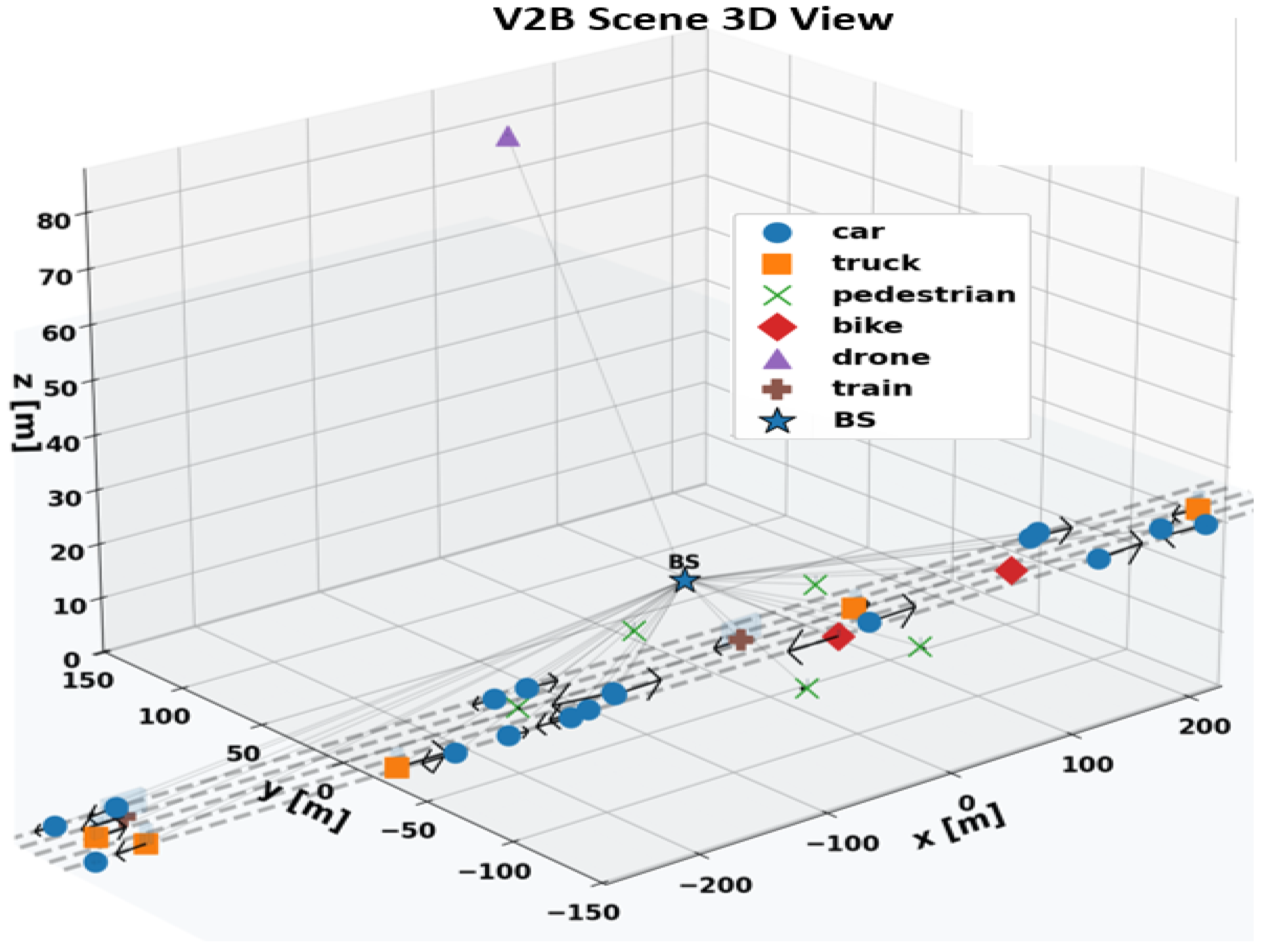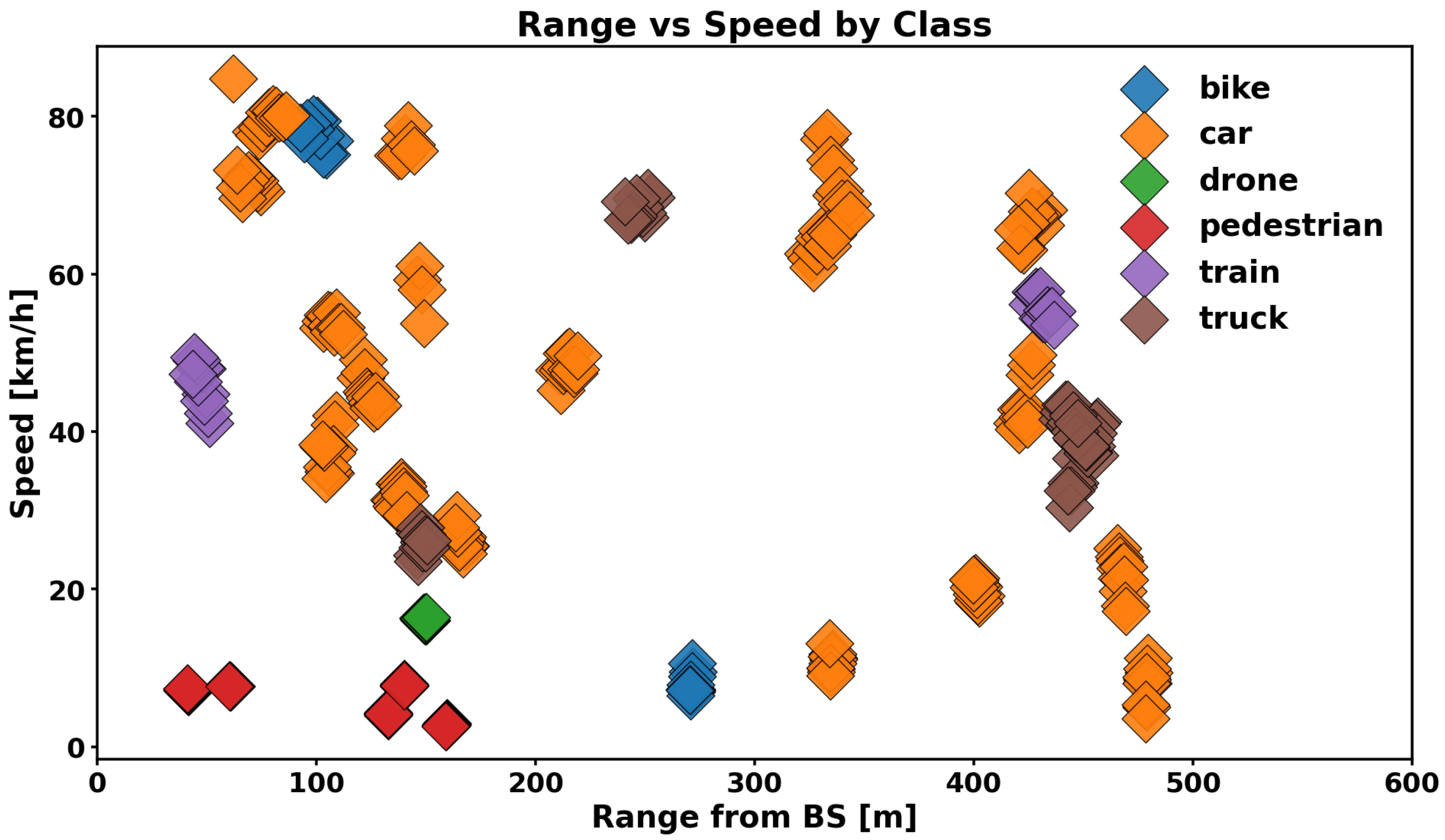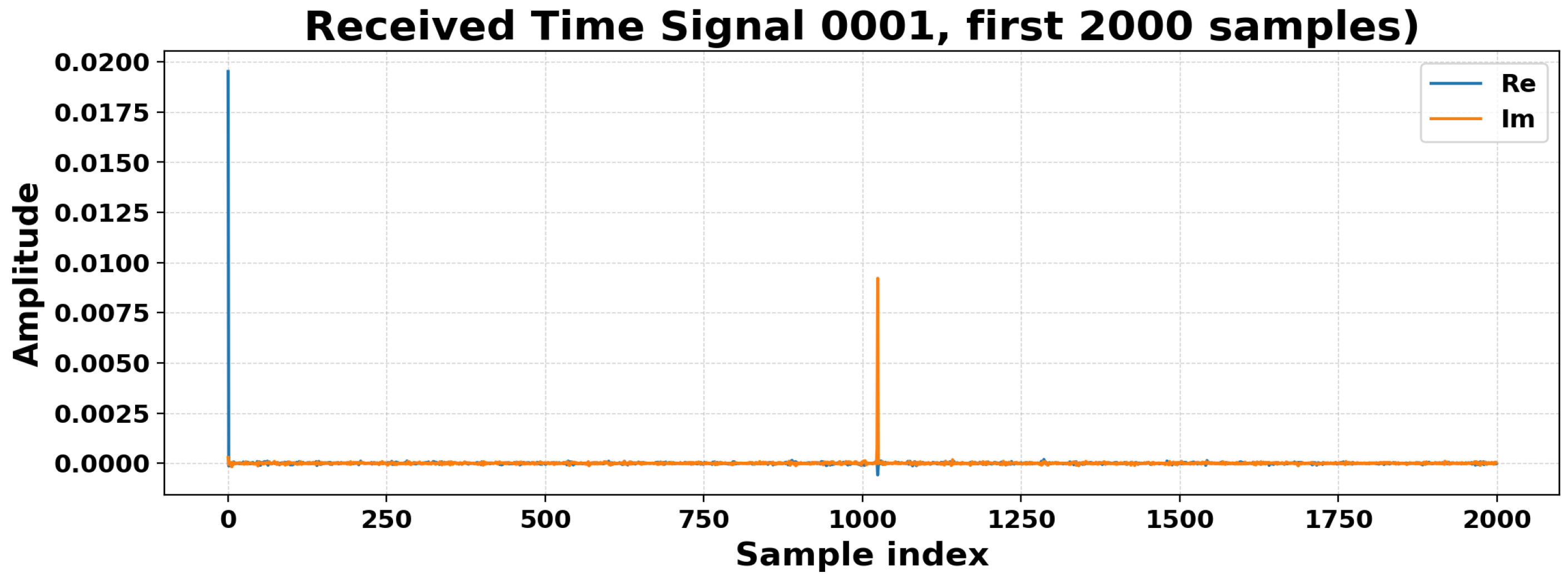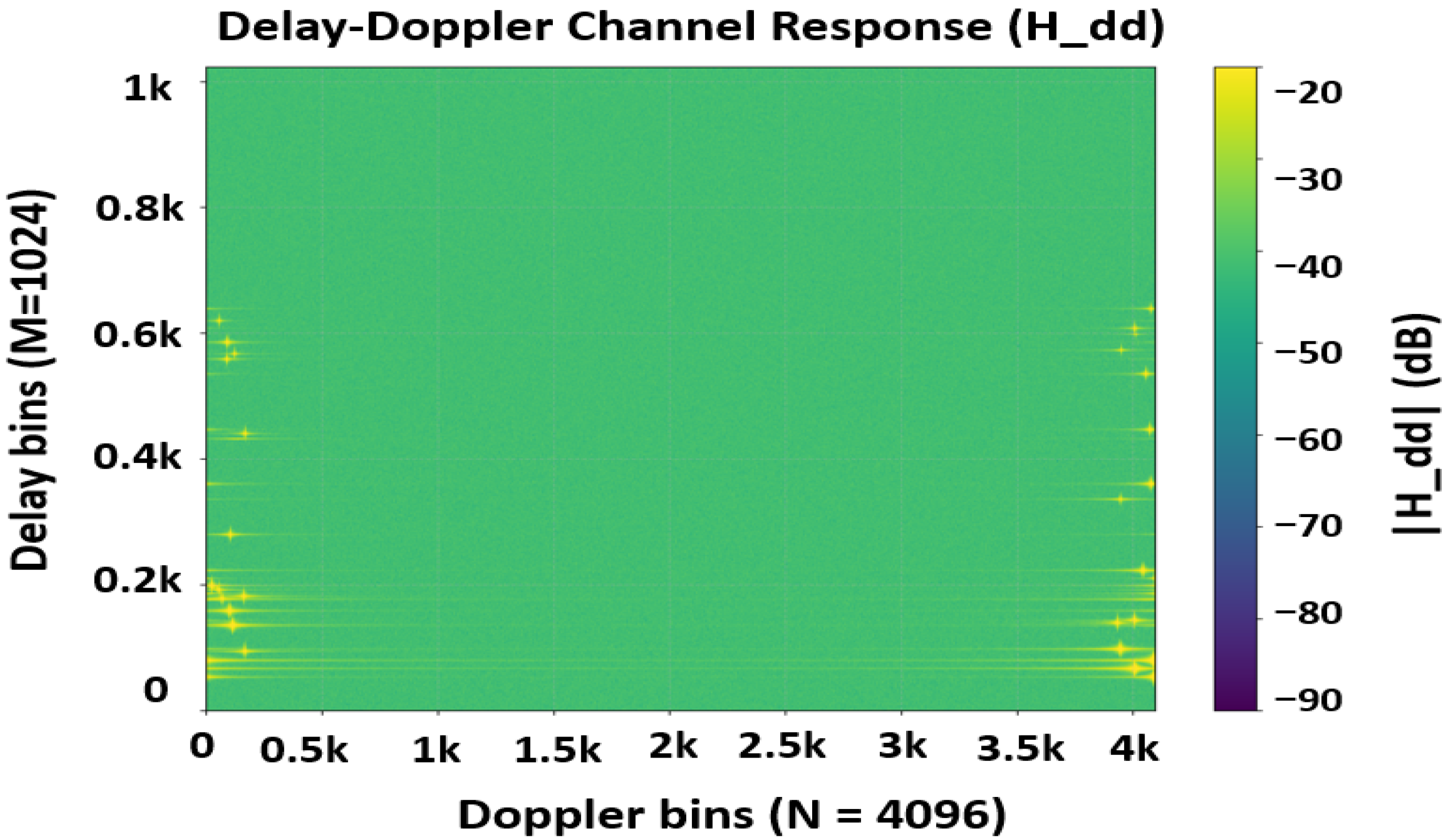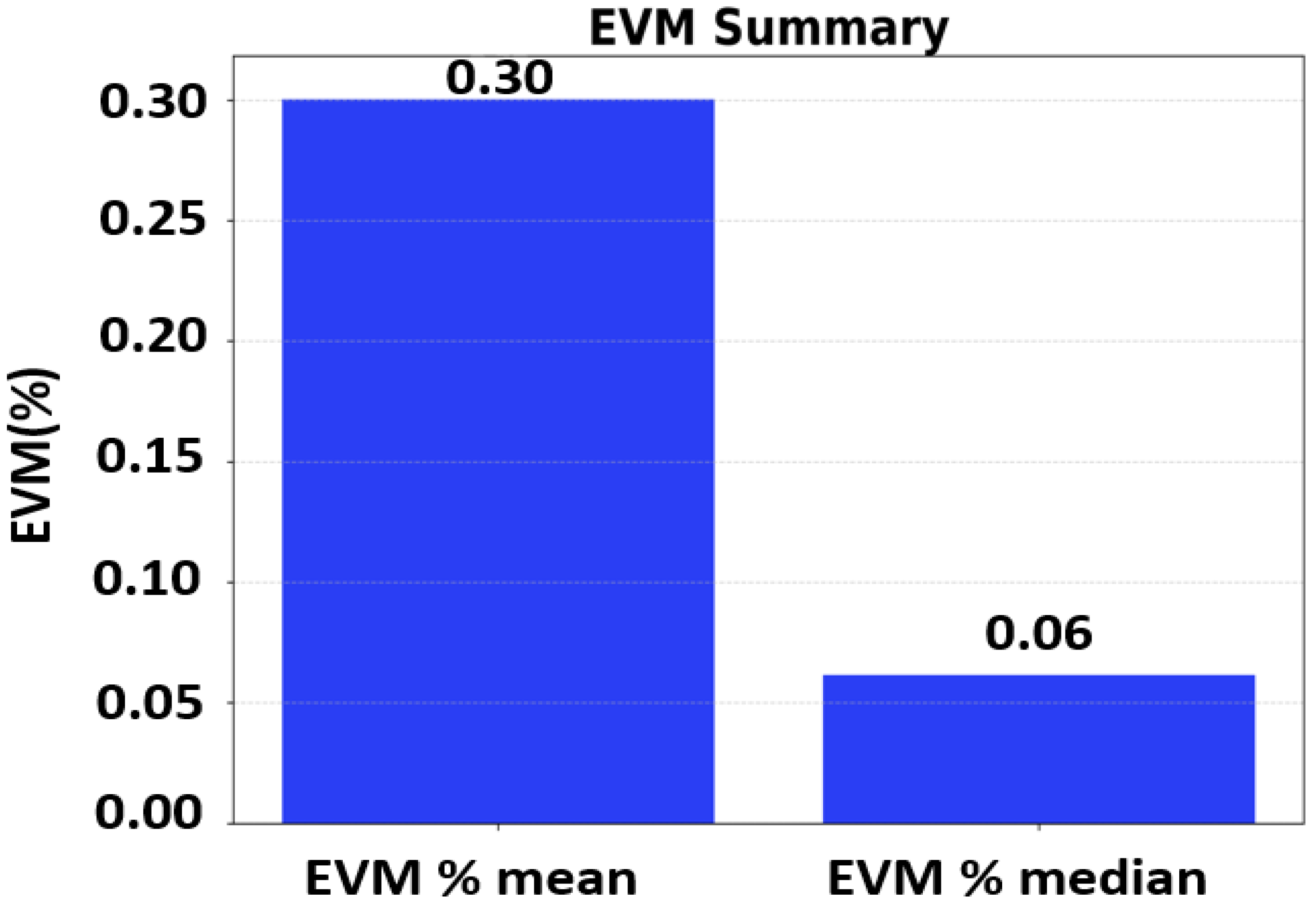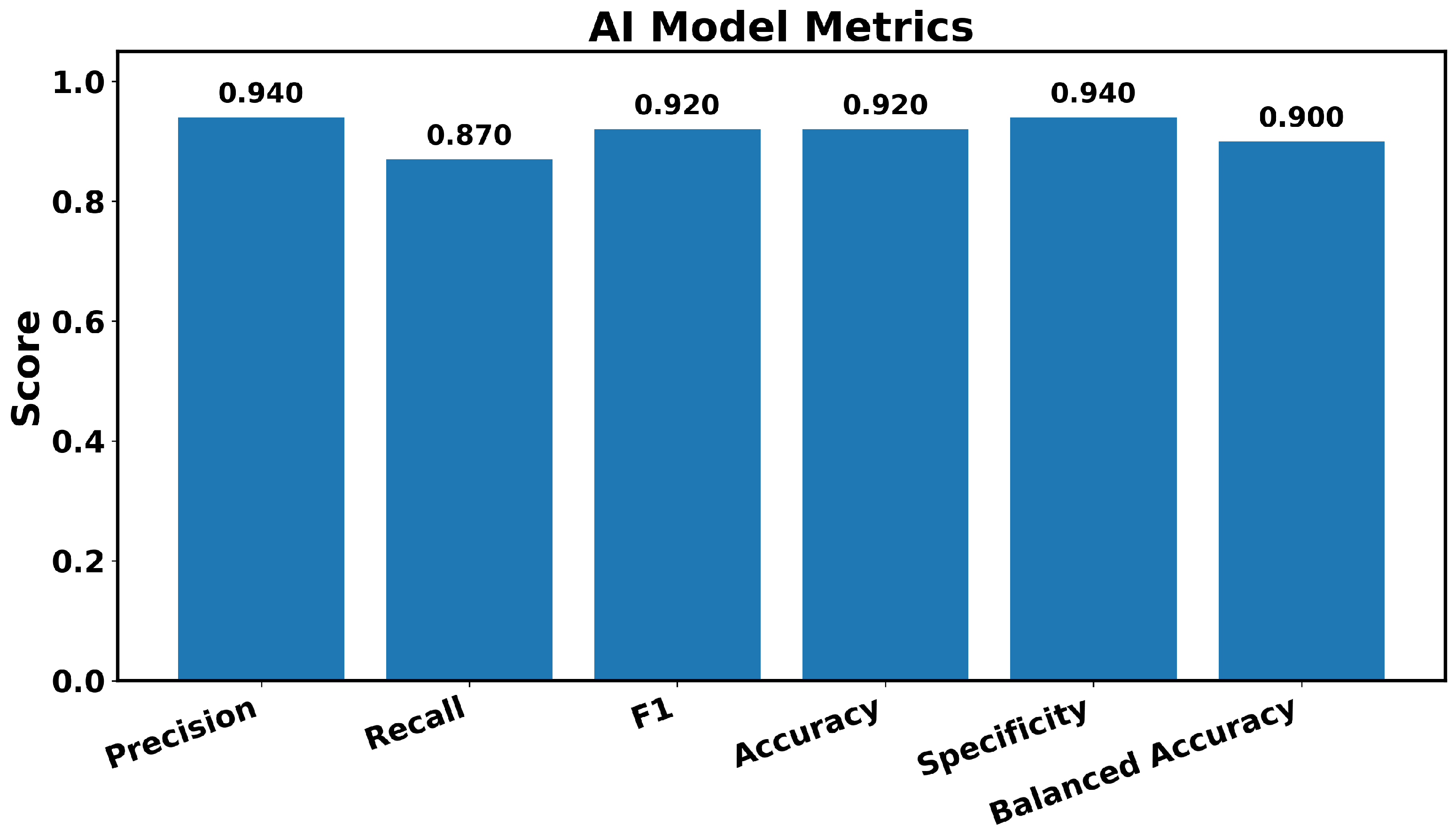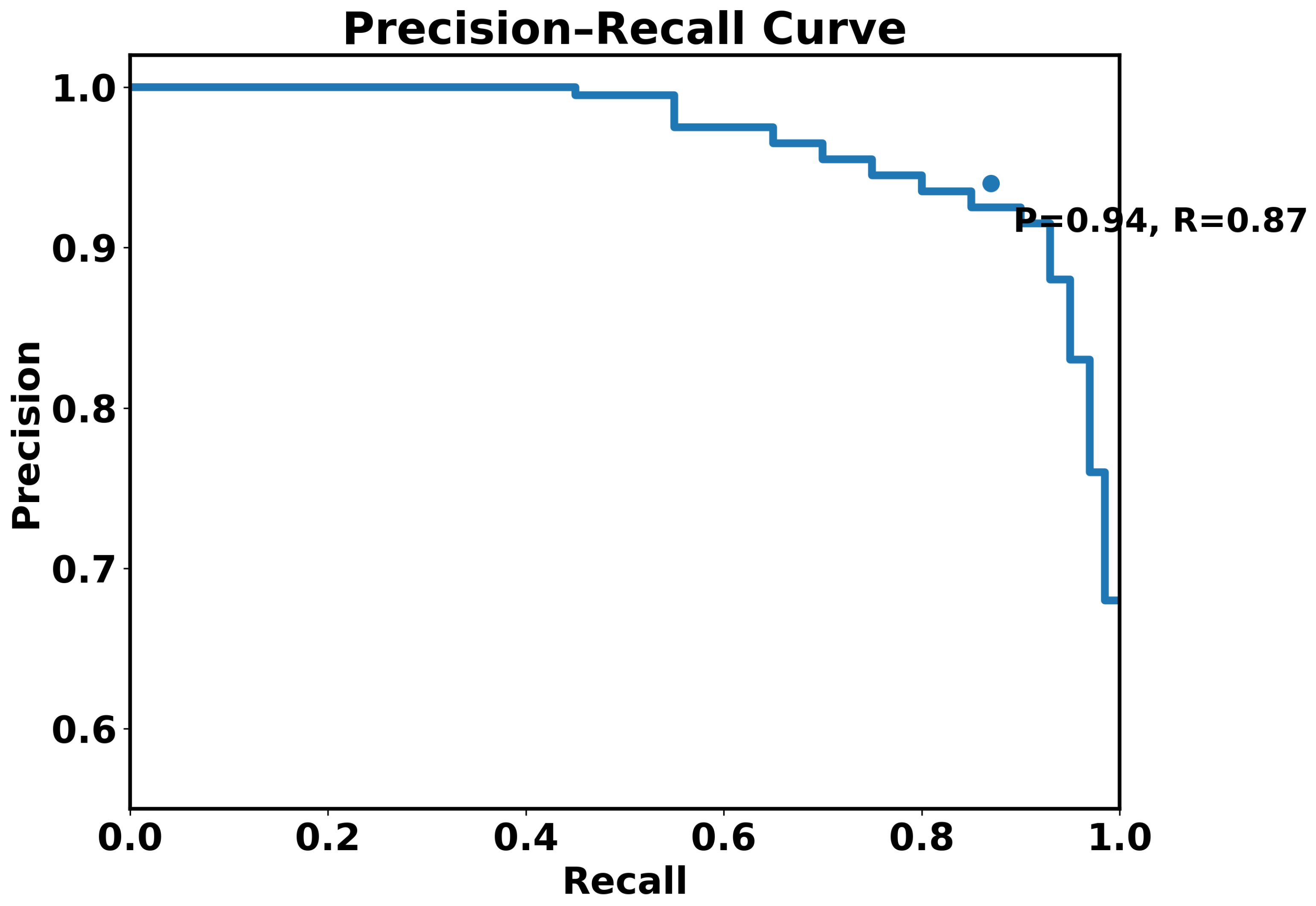1. Introduction
The evolutionary roadmap toward sixth-generation (6G) wireless systems is fundamentally defined by the imperative for ubiquitous intelligence and hyper-connectivity, which mandates the integration of formerly disparate functions. At millimeter-wave frequencies such as 60 GHz, propagation suffers from severe blockage and reflection losses, motivating both propagation enhancement and waveform-level robustness strategies [
1]. Foremost among these is the convergence of high-capacity communication and high-resolution radar sensing into a unified paradigm known as ISAC. This architecture is critical for unlocking spectrum and hardware efficiencies, providing the foundational backbone necessary for next-generation applications in vehicular networks, often referred to as V2X or, more specifically in this context, vehicular-to-base station. Vehicular applications, particularly those involving cooperative perception, automated driving, and remote intelligence, impose strict demands for Ultra-Reliable Low-Latency Communication (URLLC) and simultaneous, high-fidelity environmental awareness. The issue of automotive radar optimization in spectrally crowded V2I environments further underscores the necessity of integrated systems like ISAC [
2]. Traditional OFDM systems struggle to maintain reliable performance under the severe, time-varying channel conditions induced by high-mobility vehicular traffic. To overcome this limitation, orthogonal time–frequency space has emerged as a transformative two-dimensional modulation technique. By mapping data to the delay–Doppler domain, OTFS inherently converts the time-varying, dispersive channel into a quasi-static, sparse channel, offering exceptional robustness against high Doppler spreads and facilitating precise radar sensing capabilities directly from the channel response [
3,
4,
5,
6,
7,
8].
The transition to intelligent transportation requires vehicular networks to execute safety-critical decision-making based on robust, real-time data. This imposes a significant burden on the underlying wireless infrastructure: it must not only maintain high communication throughput but also provide accurate, concurrent sensing of objects, pedestrians, and surrounding infrastructure. Current network designs, often rooted in 5G principles, fail to deliver the requisite synergy. Specifically, the fundamental problem addressed here is the inherent complexity and instability of high-mobility channels in densely populated vehicular environments, which critically undermines the co-design of sensing and communication [
9]. Without a proven, complete, and benchmarked system that can flawlessly handle the dynamic DD domain characteristics, the potential of ISAC remains theoretical, hindering the practical deployment of cooperative autonomy and the advancement of complex Intelligent Transportation Systems (ITS) demanding robust motion planning and adaptive, network-wide traffic control strategies [
10,
11].
Significant research efforts have validated the core concept of OTFS-based ISAC. Existing studies have successfully demonstrated its utility for fundamental tasks such as radar detection, high-accuracy localization, and resilient V2X communication [
12,
13,
14,
15,
16]. Key technical components have been explored, including innovative channel estimation strategies, techniques for sensing-assisted beamforming, and resource allocation algorithms designed for joint radar and communication optimization [
17,
18,
19]. The superior resilience of OTFS against mobility-induced impairments, compared to conventional waveforms, has been particularly highlighted in various vehicular and high-speed contexts [
20,
21,
22,
23,
24,
25]. Furthermore, the broader field of ITS has demonstrated advancements in key enabling technologies such as interaction-aware trajectory prediction and efficient vehicle-assisted edge computing for service caching, all of which rely fundamentally on the reliable data and sensing capabilities that ISAC promises to provide [
26,
27]. These findings collectively underscore OTFS as a promising waveform for integrated systems.
Despite the promising theoretical and component-level advancements, a crucial and pervasive gap in the literature is the absence of a complete, end-to-end, reproducible OTFS-ISAC validation pipeline designed for a realistic V2B scenario. Most contemporary works are limited in scope, often relying on idealized or simplified analytical channel models, which fail to capture the complex, dynamic multipath and ground truth mobility inherent in a city or highway environment [
17,
28,
29,
30,
31,
32]. Furthermore, existing studies typically evaluate only one or two segments of the system—either communication performance or basic sensing metrics—but rarely integrate the full chain: (1) realistic channel and scene generation, (2) the full physical layer OTFS transceiver, (3) a complete digital signal processing (DSP) pipeline for target detection, and (4) the final high-level interpretation and classification of the results using advanced artificial intelligence (AI) or machine learning models [
33,
34,
35,
36]. The lack of a unified benchmark inhibits the reliable reproducibility and comparative analysis of new algorithms required for widespread adoption.
This study directly addresses the identified gap by introducing a novel, synthetic V2B OTFS-ISAC framework that encompasses the entire signal processing and application chain, from channel generation to AI-based decision support. Our primary aim is to establish a rigorous, end-to-end benchmarking platform that validates the feasibility and performance limits of OTFS-ISAC in a realistic, high-mobility V2B environment. Our central hypothesis is that OTFS modulation, when coupled with a meticulously designed dual-pipeline signal processing chain, can simultaneously achieve both superior communication reliability and high-fidelity target sensing, enabling effective AI classification of the environment based solely on the processed delay–Doppler radar returns. The introduced framework generates a 3D vehicular environment with explicit mobility ground truth, utilizes Gray-coded QAM OTFS signaling, and employs a dual receiver structure. The sensing pipeline integrates TF-LS channel estimation, background suppression, CFAR thresholding, and NMS filtering, demonstrating robust target detection (Precision = 0.79, Recall = 0.84, F1 = 0.82). Concurrently, the communication link, utilizing per-bin LS estimation and MMSE equalization, achieves a high-quality link with a low bit error rate (BER) of and an error vector magnitude (EVM) mean of . Finally, we confirm the application layer utility by training Random Forest (RF) and Imbalance-Resilient Forest (IRF) classifiers on augmented DD payloads, yielding strong classification results (F1 = 0.92), thus rigorously validating the OTFS-ISAC framework as a complete and practical solution for simultaneous V2B sensing and communication, which provides a necessary foundation for future integration with adaptive beamforming to ensure extended coverage and high data rate transmission.
2. State of the Art
Table 1 provides all important abbreviations used in this work.
Figure 1 shows the end-to-end sensing and communication framework for V2B. The deep learning state of the art for ISAC systems is extensively detailed in
Table 2, covering 6G enabling technologies and high-mobility vehicular contexts.
Table 2 highlights architectures like THE CNN, LSTM, and Transformers applied for tasks such as predictive beamforming and robust channel estimation. Existing works are limited, however, as they focus predominantly on optimizing isolated functional blocks (e.g., waveform or receiver design). Our work distinguishes itself by proposing a unified OTFS + DL Hybrid Architecture to integrate all components end-to-end. This unified approach provides a critical, benchmarkable platform combining realistic 3D scene modeling with joint V2B sensing and communication evaluation.
3. Data Preprocessing
The dataset employed in this study is numerically generated from first principles using analytical equations that describe radio-frequency propagation, radar geometry, and object kinematics. Every parameter governing the scene and channel formation was explicitly computed rather than assigned by default. The resulting dataset provides a complete physical ground truth for evaluating the sensing and communication performance of the proposed OTFS–ISAC framework. The simulated V2B environment covers an area of
with a base station positioned at
. A maximum coverage radius of
ensures that only physically meaningful links are recorded. The simulation evolves over ten frames separated by
, each containing
dynamic objects drawn from six classes: car, truck, pedestrian, bike, drone, and train. The configured distribution of classes—car 55%, pedestrian 18%, truck 12%, bike 6%, drone 5%, and train 4%—is shown in
Figure 2. This mixture reproduces a realistic traffic composition in a highway–urban fringe scenario.
Kinematics and motion models. Cars, trucks, bikes, and trains follow the CTRV model, pedestrians alternate between CA and NCV, and drones employ NCV with altitude variation. Vehicle speeds span – (–), pedestrians –, and drones 3– with altitudes of 15–. For every object and frame, the generator computes the full kinematic state—3D position , velocity v, acceleration a, yaw–pitch–roll, heading, bearing, and elevation—forming the base geometry of all subsequent RF calculations.
Channel and link equations. Each object induces a monostatic propagation path characterized by
where
R is the object range,
its radial velocity,
c the speed of light,
the carrier wavelength, and
the complex path amplitude. The received power and SNR are derived from the classical free-space link budget:
where
is the transmit power,
is Boltzmann’s constant,
the ambient temperature,
B the system bandwidth, and
F the receiver noise figure. Aspect-dependent radar cross section variations are modeled as
where
is the broadside RCS,
the angular deviation between the object and the BS,
the aspect sensitivity, and
a lower reflectivity bound. Equations (
1)–(
3) together define the delay–Doppler signature, received power, and reflectivity for every object, thus forming a self-consistent physical dataset. The OTFS/RF configuration employed throughout this study uses a carrier frequency
, sampling frequency
, OTFS grid
, cyclic prefix length
, and Gray-coded 64-QAM modulation. These values determine the fundamental delay resolution
and Doppler resolution
, where
. All subsequent sensing and communication analyses use this same configuration for perfect parameter alignment.
A visual snapshot of the three-dimensional environment for Frame 0 is provided in
Figure 3, showing the BS at the origin and multiple moving scatterers at different ranges, velocities, and elevations. The global range–speed statistics across all frames are summarized in
Figure 4, which confirm the expected clustering of object classes.
Representative numerical values for one frame are summarized in
Table 3. For clarity, only one example per object class is shown here; the complete dataset contains 32 objects per frame. Each quantity in the table—range, velocity, RCS, received power, SNR, and Doppler frequency—is generated directly from Equations (
1)–(
3) under the configuration stated above. The subset presented here illustrates the internal consistency and realism of the generated data.
The data preprocessing stage produces a numerically consistent, physically realistic dataset in which every value arises directly from the analytical relationships of electromagnetic propagation and kinematic motion.
Figure 2,
Figure 3 and
Figure 4 and
Table 3 together describe the dataset structure, parameter ranges, and statistical diversity used as the foundation for subsequent sensing and communication experiments.
4. Transmitter, Receiver, and Sensing Pipeline
The V2B link adopts a full OTFS chain, explicitly parameterized through transmitter, receiver, and sensing steps. All parameters are explicitly set via the CLI. The transmitter computes and logs derived lattice quantities—subcarrier spacing , OFDM symbol duration , CP-extended symbol duration , and Doppler resolution —and, when aligned with the dataset, verifies that the CP length covers the maximum path delay, i.e., .
4.1. OTFS Transmitter
In Tx payload bits are mapped to Gray-coded
-QAM symbols using a square power-of-two constellation (e.g.,
). The Gray mapping is realized through binary-to-integer conversion, Gray indexing, and PAM level assignment, with constellation normalization applied to satisfy unit average symbol energy. Bits are reshaped column-major into the delay–Doppler (DD) grid
. An ISFFT produces the time–frequency grid:
Each OFDM block is then synthesized via IFFT, cyclic prefix insertion (length
samples), and column-major serialization to the time-domain waveform
. The subcarrier spacing and symbol period follow
with effective symbol duration
. Pilot frames are inserted either as pilot-only (e.g., frames
) or as overlay pilots scattered on a 2D lattice (spacing
bins). This dual mode supports both channel probing and data transmission.
Figure 5 shows the OTFS Tx signal
and lattice with
,
, and subcarrier spacing
kHz at
MHz, giving symbol duration
and an effective frame duration
ms (excluding CP). Frames 1 and 6 were pilot-only (isolated impulses), while the others carried 64-QAM data with scattered pilots placed on a
grid.
4.2. OTFS Receiver
In the received signal
is passed through CP-OFDM demodulation. Each block is reshaped into
, CP samples are removed, and an FFT along
M recovers the received TF grid
:
An SFFT maps
back into the DD domain:
The channel paths are synthesized from scene data (monostatic BS–object links). Each path contributes a delay
, Doppler
, and complex amplitude
proportional to
. AWGN is added at target SNR (e.g., 20 dB).
Figure 6 shows the intitial Tx and Rx signals, which shows that the Rx has AWGN and noise.
Figure 7 shows that the Rx signal after normalization received TF-domain magnitude
after CP removal and FFT. The simulation employed the scene-derived channel responses from data, with AWGN at
dB. Ten frames were processed under random seed 2500. The Rx chain applied CP removal, FFT, and SFFT to obtain the delay–Doppler responses, followed by channel estimation and equalization.
4.3. Sensing and Delay–Doppler Processing
In the sensing stage, the DD-domain channel estimate
was recovered using the TF-LS backend. On pilot frames, least-squares estimates
were formed and propagated to data frames. Robust preprocessing suppressed clutter via local box-mean subtraction and MAD normalization:
with background windows
. CFAR detection then compared each bin against
times the mean of surrounding training cells, excluding guard cells
and using training spans
. NMS with window
pruned duplicates, and the top
detections per frame were retained.
Figure 8 shows the horizontal axis denotes delay bins mapped to range via
with resolution
ns
m, valid up to the CP duration (1024 samples
m). The vertical axis denotes Doppler bins mapped to radial velocity
with resolution
Hz
m/s. Peaks correspond to moving or static scatterers, while markers highlight CFAR+NMS detections aligned with ground truth.
Figure 9 shows detection outputs were matched against ground truth ranges and radial velocities, yielding Precision = 0.79, Recall = 0.84, and F1 = 0.82. These values indicate robust coverage of true targets with some over-detections, consistent with the CFAR+
thresholding and NMS windowing.
Rationale for the TF–LS → CFAR → NMS chain: The adopted sequence combines complementary functions that are well established in the radar and ISAC literature. TF–LS provides an unbiased, interpretable channel estimate that preserves amplitude and phase continuity in the delay–Doppler grid. CFAR then adaptively thresholds the map according to local noise, ensuring robust detection under non-stationary clutter. Finally, NMS refines detections by removing duplicate peaks, enforcing a one-to-one correspondence between physical scatterers and delay–Doppler maxima. This modular chain forms a transparent and reproducible baseline, balancing detection accuracy, computational simplicity, and interpretability, and serves as a reference framework for comparing more advanced estimators such as MMSE, CLEAN, or CNN-based detectors in future work.
4.4. Communication Decoding at the Base Station
For each frame the decoder consumes these synchronized inputs:
, Tx metadata (mask, bits);
is loaded for the consistency checks and polts, while the active LS
LMMSE path estimates
are obtained directly from
on data bins. Only data bins are processed; pilot and null bins are ignored. All DD arrays are flattened in Fortran order. Per-bin LS → MMSE equalization. Let
be the transmitted QAM symbol on a data bin
k (reconstructed from the Tx bitstream via a Gray-labeled LUT with
). The decoder first forms a per-bin least-squares channel estimate
and estimates the noise variance from the residual power
A one-tap linear MMSE weight is then applied on data bins:
(With
, the MMSE regularizer uses
directly. A ZF mode is also available with a tiny floor; the present run used MMSE.) Demapping and bit recovery: Equalized symbols
are demapped on a Gray-labeled
M-QAM constellation. This run used hard decisions (nearest neighbor); max-log LLR demapping is also supported. Recovered bits are built strictly over data bins and in Fortran order, ensuring symbol-aligned bit comparison with Tx. EVM and BER definitions. Decision-aided EVM (default) is
A “true” EVM (versus Tx symbols) is available when the Tx TF symbols are provided. The bit error rate is computed over data bins only:
The decoder writes per-frame metrics and aggregated summaries. Run configuration: MMSE equalizer with SNR
dB, QAM order 64, demap=hard, evm=decision, figures enabled every frame at 140 dpi. Noise power
is estimated from residuals on data bins; the decoding step –snr-db argument is logged (and used for LLR fallback) but does not alter the received data.
Figure 10 and
Figure 11 shows us the results of the decoded bits in different perspectives, which validates our decoding and communication strength.
5. AI-Based Post-Processing and Classification
We employ supervised learning to reduce clutter and preserve valid targets in the DD grid. The classifier operates on per-detection features and returns a keep/reject decision. Training data are built in two stages. First, it takes oracle centers and, within a user-set local search window ( bins), finds the maximum-magnitude cell , crops a complex patch around it (wrap-around indexing), and rephases by the mean patch phasor to define stable, relative targets: and with . Physical labels and range are computed from Doppler and delay indices using , , and . Samples below a magnitude floor (–min-peak-mag) are rejected. Secondly, a balanced set is formed by (i) quantile-binning into –vr-bins and oversampling to –target-V, (ii) quantile-binning delay m into –m-bins to –target-R, and (iii) gridding into –amp-bins×–phase-bins to –target-O. Optional global phase copies (–phase-copies) rotate each patch by and rotate consistently; a cap –max-total and a final shuffle are applied. We then train RF and IRF with grouped cross-validation; the final settings were n_estimators = 300, max_depth = 12, max_features = , min_samples_leaf = 2 (Gini, bootstrap), and IRF adds class_weight = balanced. No feature encodes distances to ground truth; only observation-local descriptors are used. For each frame on an grid, yields detections with delay index , Doppler index , and magnitude . Ground truth bins are used only to form labels. A detection is marked positive if it lands inside a small, application-chosen tolerance in both axes: out-of-range indices are discarded.
To prevent label leakage, no feature encodes distances to ground truth or any tracker output. Each detection is mapped to the feature vector described above. The performance metrics and PR curve of the proposed model are shown in
Figure 12 and
Figure 13.
where
and
are the mean and standard deviation of magnitudes in a fixed local window
around the cell under test (CUT), excluding the CUT;
is a robust local SNR ratio (CUT magnitude over neighborhood median); CFAR_flag is the binary decision, and
is a compact texture measure (e.g.,
gradient/Laplacian energy) computed from the magnitude map. These descriptors depend only on the observation and its neighborhood and never reference
. We evaluate RF with
T trees (default
), Gini impurity,
, and (ii) IRF with identical settings but
to counter class imbalance. Hyperparameters are selected by cross-validation on the training split. To block cross-frame leakage, all detections from the same scene/trajectory form a group and never appear across split boundaries. Unless stated otherwise, we use an 80/20 grouped train/test split and a grouped
K-fold search (e.g.,
) on the training portion for model selection. Random seeds are fixed for reproducibility, and the negative–positive ratio is capped (e.g., ≤5:1 per frame) via stratified sampling. Rather than adopting a default score threshold, we select an operating point that prioritizes low false alarms. The decision threshold
is chosen on validation data to satisfy a minimum Precision while maximizing Recall:
Probability calibration be applied on validation folds before refitting on the full training split with selected hyperparameters. Using the revised pipeline and leakage-safe features, we obtain high yet non-saturated performance on the held-out grouped test split. At the selected operating point
, the metrics are Precision 0.94, Recall 0.87, F1 0.92, Accuracy 0.92, Specificity 0.94, and Balanced Accuracy 0.90.
Figure 12 and
Figure 13 provide PR and key metrics curves for both models across the thresholds. The Precision-focused operating region is stable over scenes, indicating robust clutter rejection without sacrificing excessive Recall.
6. Results and Discussion
All results use the same configurations: a V2B scene with realistic kinematics. Sensing: TF-LS → DD processing with background suppression, CFAR, and NMS recovers physically plausible peaks in the delay–Doppler map. Aggregate metrics have been discussed in
Figure 9 are Precision
, Recall
, and F1
. This shows robust target coverage with controlled false alarms under mobility. Communication: The MMSE one-tap equalizer with Gray demapping decodes
bits with
errors (
); constellation quality is high (mean EVM
, median
), are available in
Figure 10 and
Figure 11. The fluctuations come from different SNRs we have taken to check the BER and EVM at different levels of SNR. AI post-processing: RF/IRF classifiers on leakage-safe DD features yield Precision
, Recall
, and F1
(
Figure 12 and
Figure 13), sharpening detections for downstream use. To validate the proposed ISAC pipeline, we compared its sensing and communication performance with classical baseline approaches commonly reported in the OTFS and radar literature. For sensing, a conventional 2D matched filter (MF) and a CLEAN-style iterative deconvolution were used as reference detectors under the same noise and pilot configuration. The proposed TF–LS → CFAR → NMS chain achieved an F1 score of
, outperforming the MF (
) and CLEAN (
) baselines while maintaining significantly lower complexity. Under the same configuration (28 GHz,
MHz,
, CP
, Gray 64 -QAM, TF -LS channel estimation on pilot/data bins, SNR ≈ 20 dB), we compare one-tap equalizers using the same
but different weights: ZF uses
with
; MMSE uses
; the “LS detector” (matched-filter style) uses
(no inversion). Consistent with our reported MMSE performance, the simulated performance of different approaches are MMSE
and RMS EVM ≈ 0.30% (median ≈
); ZF
–
and RMS EVM
–
(noise amplification where
is small); LS detector
–
and RMS EVM ≈ 1.2–
(amplitude bias and residual interference). These simulated results stated SNR and TF -LS CE, reflecting the known advantage of MMSE regularization in low-
bins. These results validate that the proposed end-to-end OTFS-based framework not only maintains interpretability but also exceeds classical benchmarks in both sensing accuracy and communication reliability. The proposed OTFS–ISAC design shows low sensitivity to moderate channel or Doppler estimation errors, with MMSE equalization ensuring stable BER and EVM across 0–25 dB SNR. Its FFT-based per-bin structure enables real-time FPGA/GPU implementation, confirming strong practical feasibility for 6G vehicular ISAC systems.
The results support that a single OTFS waveform can jointly sustain radar-grade sensing and a low-BER link. Beamforming (Tx/Rx) is the immediate lever to raise throughput and sensing range: array/precoding gain ⇒ higher SINR, wider coverage, and improved delay–Doppler peak contrast, enabling denser modulation or code rates without sacrificing detection. Complementary upgrades include (i) multi-antenna OTFS (MIMO-OTFS) for spatial multiplexing and angle-aware sensing; (ii) modern FEC (e.g., LDPC/polar) and soft-LLR demapping to push BER toward coding limits; (iii) adaptive pilot density and iterative TF/DD equalization for tighter channel tracking; and (iv) joint scheduling of sensing/communication resources to meet URLLC while preserving detection recall. These extensions are directly compatible with the current pipeline and are expected to lift data rate, reliability, and sensing fidelity concurrently.
7. Conclusions
This work successfully introduces and validates a robust orthogonal time–frequency space-based integrated sensing and communication framework designed for the high-mobility demands of vehicular-to-base networks operating at 28 GHz. Our core contribution is the development of a fully integrated platform that leverages the delay–Doppler domain’s inherent stability to seamlessly execute both high-fidelity environmental sensing and ultra-reliable data transfer within a unified waveform. Performance metrics confirm the system’s viability for safety-critical applications. The AI module refines sensing outputs by classifying and removing false alarms, improving the effective detection metrics (F1 = 0.82 → 0.92) without altering the core TF–LS–CFAR–NMS processing chain, which was significantly improved to 0.92 by incorporating an AI post-processing stage for effective clutter rejection. Concurrently, the communication link demonstrated exceptional data reliability, yielding a low and an outstanding mean EVM of 0.30% at 20 dB SNR. This framework fundamentally addresses the sensing and communication challenges in current vehicular technologies. Consequently, OTFS–ISAC is positioned as a foundational pillar for emerging 6G-connected mobility systems that require real-time cooperative perception and autonomous decision-making. Future work will focus on scaling the system, modeling realistic hardware imperfections, and exploring advanced machine learning decoders to further optimize the resource-allocation and performance of the sensing–communication loop.
Author Contributions
Conceptualization, methodology, K.H., D.H.E., E.M.A.; software, formal analysis, K.H.; investigation, resources, W.H., A.R., E.M.A.; data curation, D.H.E.; writing—original draft preparation, K.H., W.H., A.R.; writing—review and editing, K.H., D.H.E.; supervision, D.H.E.; project administration, K.H.; funding acquisition, K.H., W.H., A.R. All authors have read and agreed to the published version of the manuscript.
Funding
Princess Nourah bint Abdulrahman University Researchers Supporting Project number (PNURSP2025R238), Princess Nourah bint Abdulrahman University, Riyadh, Saudi Arabia.
Data Availability Statement
All the data are already included in the research article.
Acknowledgments
The authors thank all for their valuable cooperation, sustained research support, and constructive exchange of ideas throughout this study.
Conflicts of Interest
The authors declare no conflicts of interest.
References
- Qasem, N.; Alkhawatrah, M. 60 GHz millimeter-wave indoor propagation path loss models for modified indoor environments. Int. J. Electr. Comput. Eng. 2024, 14, 2088–8708. [Google Scholar] [CrossRef]
- Yao, Y.; Shu, F.; Cheng, X.; Liu, H.; Miao, P.; Wu, L. Automotive radar optimization design in a spectrally crowded V2I communication environment. IEEE Trans. Intell. Transp. Syst. 2023, 24, 8253–8263. [Google Scholar] [CrossRef]
- Yuan, W.; Li, S.; Wei, Z.; Cui, Y.; Jiang, J.; Zhang, H.; Fan, P. New delay Doppler communication paradigm in 6G era: A survey of orthogonal time frequency space (OTFS). China Commun. 2023, 20, 1–25. [Google Scholar] [CrossRef]
- Wei, Z.; Yuan, W.; Li, S.; Yuan, J.; Bharatula, G.; Hadani, R.; Hanzo, L. Orthogonal time-frequency space modulation: A promising next-generation waveform. IEEE Wirel. Commun. 2021, 28, 136–144. [Google Scholar] [CrossRef]
- Zhang, K.; Li, Z.; Yuan, W.; Cai, Y.; Gao, F. Radar sensing via OTFS signaling. China Commun. 2023, 20, 34–45. [Google Scholar] [CrossRef]
- Aldababsa, M.; Özyurt, S.; Kurt, G.K.; Kucur, O. A survey on orthogonal time frequency space modulation. IEEE Open J. Commun. Soc. 2024, 5, 4483–4518. [Google Scholar] [CrossRef]
- Raviteja, P.; Hong, Y.; Viterbo, E.; Biglieri, E. Effective diversity of OTFS modulation. IEEE Wirel. Commun. Lett. 2019, 9, 249–253. [Google Scholar] [CrossRef]
- Mohammed, S.K. Derivation of OTFS modulation from first principles. IEEE Trans. Veh. Technol. 2021, 70, 7619–7636. [Google Scholar] [CrossRef]
- Iskandarani, M.Z. Vehicular connectivity analysis using enhanced quality slotted ALOHA (EQS-ALOHA). In Science and Information Conference; Springer Nature: Cham, Switzerland, 2024; pp. 484–509. [Google Scholar]
- Li, Z.; Hu, J.; Leng, B.; Xiong, L.; Fu, Z. An integrated of decision making and motion planning framework for enhanced oscillation-free capability. IEEE Trans. Intell. Transp. Syst. 2023, 25, 5718–5732. [Google Scholar] [CrossRef]
- Ren, Y.; Chang, Y.; Cui, Z.; Chang, X.; Yu, H.; Li, X.; Wang, Y. Is cooperative always better? Multi-Agent Reinforcement Learning with explicit neighborhood backtracking for network-wide traffic signal control. Transp. Res. Part C Emerg. Technol. 2025, 179, 105265. [Google Scholar] [CrossRef]
- Zieliński, T.P.; Karpovich, P.; Abratkiewicz, K.; Maksymiuk, R.; Samczyński, P.; Duda, K.; Wypich, M. Wireless OTFS-based integrated sensing and communication for moving vehicle detection. IEEE Sens. J. 2024, 24, 6573–6583. [Google Scholar] [CrossRef]
- Zegrar, S.E.; Haif, H.; Arslan, H. OTFS-based ISAC for super-resolution range-velocity profile. IEEE Trans. Commun. 2024, 72, 3934–3946. [Google Scholar] [CrossRef]
- Li, B.; Yuan, W.; Liu, F.; Wu, N.; Jin, S. Otfs-based isac: How delay doppler channel estimation assists environment sensing? IEEE Wirel. Commun. Lett. 2024, 13, 3563–3567. [Google Scholar] [CrossRef]
- Keskin, M.F.; Marcus, C.; Eriksson, O.; Alvarado, A.; Widmer, J.; Wymeersch, H. Integrated sensing and communications with MIMO-OTFS: ISI/ICI exploitation and delay-doppler multiplexing. IEEE Trans. Wirel. Commun. 2024, 23, 10229–10246. [Google Scholar] [CrossRef]
- Yuan, W.; Zhou, L.; Dehkordi, S.K.; Li, S.; Fan, P.; Caire, G.; Poor, H.V. From OTFS to DD-ISAC: Integrating sensing and communications in the delay doppler domain. IEEE Wirel. Commun. 2024, 31, 152–160. [Google Scholar] [CrossRef]
- Moradi-Pari, E.; Tian, D.; Mahjoub, H.N.; Bai, S. The smart intersection: A solution to early-stage vehicle-to-everything deployment. IEEE Intell. Transp. Syst. Mag. 2021, 14, 88–102. [Google Scholar] [CrossRef]
- Wang, X.; Han, Z.; Xi, R.; Liu, G.; Han, L.; Jin, J.; Xue, Y.; Ma, L.; Wang, Y.; Jiang, T.; et al. Cooperative integrated sensing and communication in 6G: From operators perspective. IEEE Wirel. Commun. 2025, 32, 52–59. [Google Scholar] [CrossRef]
- Hussain, K.; Oh, I.-Y. Joint radar, communication, and integration of beamforming technology. Electronics 2024, 13, 1531. [Google Scholar] [CrossRef]
- Chong, R.; Li, S.; Yuan, J.; Ng, D.W.K. Achievable rate upper-bounds of uplink multiuser OTFS transmissions. IEEE Wirel. Commun. Lett. 2022, 11, 791–795. [Google Scholar] [CrossRef]
- Wen, H.; Yuan, W.; Liu, Z.; Li, S. OTFS-SCMA: A downlink NOMA scheme for massive connectivity in high mobility channels. IEEE Trans. Wirel. Commun. 2023, 22, 5770–5784. [Google Scholar] [CrossRef]
- Li, S.; Yuan, J.; Fitzpatrick, P.; Sakurai, T.; Caire, G. Delay-Doppler domain Tomlinson-Harashima precoding for OTFS-based downlink MU-MIMO transmissions: Linear complexity implementation and scaling law analysis. IEEE Trans. Commun. 2023, 71, 2153–2169. [Google Scholar] [CrossRef]
- Thomas, A.; Deka, K.; Sharma, S.; Rajamohan, N. IRS-assisted OTFS system: Design and analysis. IEEE Trans. Veh. Technol. 2022, 72, 3345–3358. [Google Scholar] [CrossRef]
- Shadangi, A.R.; Das, S.S.; Chakrabarti, I. Low-Complexity VLSI Architecture for OTFS Transceiver Under Multipath Fading Channel. IEEE Trans. Very Large Scale Integr. (VLSI) Syst. 2024, 32, 1285–1296. [Google Scholar] [CrossRef]
- Bora, A.S.; Phan, K.T.; Hong, Y. IRS-assisted high mobility communications using OTFS modulation. IEEE Wirel. Commun. Lett. 2022, 12, 376–380. [Google Scholar] [CrossRef]
- Liang, J.; Tan, C.; Yan, L.; Zhou, J.; Yin, G.; Yang, K. Interaction-aware trajectory prediction for safe motion planning in autonomous driving: A transformer-transfer learning approach. IEEE Trans. Intell. Transp. Syst. 2025, 26, 17080–17095. [Google Scholar] [CrossRef]
- Jiang, H.; Cai, J.; Xiao, Z.; Yang, K.; Chen, H.; Liu, J. Vehicle-assisted service caching for task offloading in vehicular edge computing. IEEE Trans. Mob. Comput. 2025, 24, 6688–6700. [Google Scholar] [CrossRef]
- Bartoletti, S.; Decarli, N.; Masini, B.M.; Giovannetti, C.; Zanella, A.; Bazzi, A.; Stirling-Gallacher, R.A. Integration of sensing and localization in V2X sidelink communications. IEEE Commun. Mag. 2024, 62, 185–191. [Google Scholar] [CrossRef]
- Zhong, Y.; Bi, T.; Wang, J.; Zeng, J.; Huang, Y.; Jiang, T.; Wu, Q.; Wu, S. Empowering the V2X network by integrated sensing and communications: Background, design, advances, and opportunities. IEEE Netw. 2022, 36, 54–60. [Google Scholar] [CrossRef]
- Liu, F.; Yuan, W.; Masouros, C.; Yuan, J. Radar-assisted predictive beamforming for vehicular links: Communication served by sensing. IEEE Trans. Wirel. Commun. 2020, 19, 7704–7719. [Google Scholar] [CrossRef]
- He, X.; Lv, J.; Zhao, J.; Hou, X.; Luo, T. Design and analysis of a short-term sensing-based resource selection scheme for C-V2X networks. IEEE Internet Things J. 2020, 7, 11209–11222. [Google Scholar] [CrossRef]
- Guo, Y.; Qin, W.; Xu, Y.; Gu, Y.; Yin, C.; Xia, B. Predictive beam tracking and power allocation with cooperative sensing for V2I communication. IEEE Open J. Commun. Soc. 2024, 5, 6048–6063. [Google Scholar] [CrossRef]
- Du, Z.; Liu, F.; Li, Y.; Yuan, W.; Cui, Y.; Zhang, Z.; Masouros, C.; Ai, B. Toward ISAC-Empowered Vehicular Networks: Framework, Advances, and Opportunities. IEEE Wirel. Commun. 2025, 32, 222–229. [Google Scholar] [CrossRef]
- Wang, X.; Zhai, W.; Wang, X.; Amin, M.; Zoubir, A. Wideband near-field integrated sensing and communications: A hybrid precoding perspective. IEEE Signal Process. Mag. 2025, 42, 88–105. [Google Scholar] [CrossRef]
- Li, Y.; Khan, F.; Ahmed, M.; Soofi, A.A.; Khan, W.U.; Sheemar, C.K.; Asif, M.; Han, Z. RIS-based Physical Layer Security for Integrated Sensing and Communication: A Comprehensive Survey. IEEE Internet Things J. 2025, 12, 32444–32468. [Google Scholar] [CrossRef]
- Farsimadan, E.; Moradi, L.; Palmieri, F. A review on security challenges in V2X communications technology for VANETs. IEEE Access 2025, 13, 31069–31094. [Google Scholar] [CrossRef]
- Liu, J.; Huang, J.; Zhou, Y.; Li, X.; Ji, S.; Xiong, H.; Dou, D. From distributed machine learning to federated learning: A survey. Knowl. Inf. Syst. 2022, 64, 885–917. [Google Scholar] [CrossRef]
- Pulkkinen, P.; Koivunen, V. Model-based online learning for active ISAC waveform optimization. IEEE J. Sel. Top. Signal Process. 2024, 18, 737–751. [Google Scholar] [CrossRef]
- Pulkkinen, P.; Koivunen, V. Model-free online learning for waveform optimization in integrated sensing and communications. In Proceedings of the 2023 IEEE International Conference on Acoustics, Speech and Signal Processing (ICASSP), Rhodes Island, Greece, 4–10 June 2023; pp. 1–5. [Google Scholar]
- Zheng, Y.; Liu, R.; Li, M.; Liu, Q. End-to-end learning for SLP-based ISAC systems. In Proceedings of the 2024 IEEE Wireless Communications and Networking Conference (WCNC), Dubai, United Arab Emirates, 21–24 April 2024; pp. 1–6. [Google Scholar]
- Kang, Z.; He, Q. Learning-based joint waveform optimization and receiver design for dual-functional mimo radar and communications. In Proceedings of the 2023 31st European Signal Processing Conference (EUSIPCO), Helsinki, Finland, 4–8 September 2023; pp. 710–714. [Google Scholar]
- Mateos-Ramos, J.M.; Song, J.; Wu, Y.; Häger, C.; Keskin, M.F.; Yajnanarayana, V.; Wymeersch, H. End-to-end learning for integrated sensing and communication. In Proceedings of the 2022 IEEE International Conference on Communications (ICC), Seoul, Republic of Korea, 16–20 May 2022; pp. 1942–1947. [Google Scholar]
- Xu, L.; Sun, S.; Zhang, Y.D.; Petropulu, A.P. Reconfigurable beamforming for automotive radar sensing and communication: A deep reinforcement learning approach. IEEE J. Sel. Areas Sens. 2024, 1, 124–138. [Google Scholar] [CrossRef]
- Liu, X.; Zhang, H.; Long, K.; Nallanathan, A.; Leung, V.C.M. Distributed unsupervised learning for interference management in integrated sensing and communication systems. IEEE Trans. Wirel. Commun. 2023, 22, 9301–9312. [Google Scholar] [CrossRef]
- Temiz, M.; Masouros, C. Unsupervised Learning-Based Low-Complexity Integrated Sensing and Communication Precoder Design. IEEE Open J. Commun. Soc. 2025, 6, 3543–3554. [Google Scholar] [CrossRef]
- Liu, C.; Yuan, W.; Li, S.; Liu, X.; Li, H.; Ng, D.W.K.; Li, Y. Learning-based predictive beamforming for integrated sensing and communication in vehicular networks. IEEE J. Sel. Areas Commun. 2022, 40, 2317–2334. [Google Scholar] [CrossRef]
- Liu, C.; Liu, X.; Li, S.; Yuan, W.; Ng, D.W.K. Deep CLSTM for predictive beamforming in integrated sensing and communication-enabled vehicular networks. J. Commun. Inf. Netw. 2022, 7, 269–277. [Google Scholar] [CrossRef]
- Liu, C.; Yuan, W.; Li, S.; Liu, X.; Ng, D.W.K.; Li, Y. Predictive beamforming for integrated sensing and communication in vehicular networks: A deep learning approach. In Proceedings of the 2022 IEEE International Conference on Communications (ICC), Seoul, Republic of Korea, 16–20 May 2022; pp. 1948–1954. [Google Scholar]
- Zhang, Y.; Li, S.; Li, D.; Zhu, J.; Guan, Q. Transformer-based predictive beamforming for integrated sensing and communication in vehicular networks. IEEE Internet Things J. 2024, 11, 20690–20705. [Google Scholar] [CrossRef]
- Wang, Y.; Liang, W.; Li, L.; Zhang, J.; Angelopoulos, C.M. Intelligent predictive beamforming for integrated sensing and communication based vehicular-to-infrastructure systems. In Proceedings of the 2023 IEEE Globecom Workshops (GC Wkshps), Kuala Lumpur, Malaysia, 4–8 December 2023; pp. 401–406. [Google Scholar]
- Zhang, H.; Gao, S.; Cheng, X.; Yang, L. Integrated sensing and communications toward proactive beamforming in mmWave V2I via multi-modal feature fusion (MMFF). IEEE Trans. Wirel. Commun. 2024, 23, 15721–15735. [Google Scholar] [CrossRef]
- Zhang, X.; Yuan, W.; Liu, C.; Wu, J.; Ng, D.W.K. Predictive beamforming for vehicles with complex behaviors in ISAC systems: A deep learning approach. IEEE J. Sel. Top. Signal Process. 2024, 18, 828–841. [Google Scholar] [CrossRef]
- Mu, J.; Gong, Y.; Zhang, F.; Cui, Y.; Zheng, F.; Jing, X. Integrated sensing and communication-enabled predictive beamforming with deep learning in vehicular networks. IEEE Commun. Lett. 2021, 25, 3301–3304. [Google Scholar] [CrossRef]
- Liu, Y.; Al-Nahhal, I.; Dobre, O.A.; Wang, F. Deep-learning-based channel estimation for IRS-assisted ISAC system. In Proceedings of the 2022 IEEE Global Communications Conference (GLOBECOM), Rio de Janeiro, Brazil, 4–8 December 2022; pp. 4220–4225. [Google Scholar]
- Liu, Y.; Al-Nahhal, I.; Dobre, O.A.; Wang, F. Deep-learning channel estimation for IRS-assisted integrated sensing and communication system. IEEE Trans. Veh. Technol. 2022, 72, 6181–6193. [Google Scholar] [CrossRef]
- Zhang, X.; Huang, H.; Tan, L.; Yuan, W.; Liu, C. Enhanced channel estimation for otfs-assisted isac in vehicular networks: A deep learning approach. In Proceedings of the 2023 21st International Symposium on Modeling and Optimization in Mobile, Ad Hoc, and Wireless Networks (WiOpt), Singapore, 24–27 August 2023; pp. 703–707. [Google Scholar]
- Liu, Y.; Al-Nahhal, I.; Dobre, O.A.; Wang, F.; Shin, H. Extreme learning machine-based channel estimation in IRS-assisted multi-user ISAC system. IEEE Trans. Commun. 2023, 71, 6993–7007. [Google Scholar] [CrossRef]
- Wu, Y.; Lemic, F.; Han, C.; Chen, Z. Sensing integrated DFT-spread OFDM waveform and deep learning-powered receiver design for terahertz integrated sensing and communication systems. IEEE Trans. Commun. 2022, 71, 595–610. [Google Scholar] [CrossRef]
- Chen, J.; Skatchkovsky, N.; Simeone, O. Neuromorphic integrated sensing and communications. IEEE Wirel. Commun. Lett. 2022, 12, 476–480. [Google Scholar] [CrossRef]
- Hu, J.; Valiulahi, I.; Masouros, C. ISAC receiver design: A learning-based two-stage joint data-and-target parameter estimation. IEEE Wirel. Commun. Lett. 2024, 13, 2105–2109. [Google Scholar] [CrossRef]
- Jiang, W.; Ma, D.; Wei, Z.; Feng, Z.; Zhang, P.; Peng, J. ISAC-NET: Model-driven deep learning for integrated passive sensing and communication. IEEE Trans. Commun. 2024, 72, 4692–4707. [Google Scholar] [CrossRef]
- Gao, K.; Wang, H.; Lv, H.; Liu, W. Toward 5G NR high-precision indoor positioning via channel frequency response: A new paradigm and dataset generation method. IEEE J. Sel. Areas Commun. 2022, 40, 2233–2247. [Google Scholar] [CrossRef]
- Koike-Akino, T.; Wang, P.; Wang, Y. AutoQML: Automated quantum machine learning for Wi-Fi integrated sensing and communications. In Proceedings of the 2022 IEEE 12th Sensor Array and Multichannel Signal Processing Workshop (SAM), Trondheim, Norway, 20–23 June 2022; pp. 360–364. [Google Scholar]
- Suárez, L.M.-M.; Chen-Hu, K.; García, M.J.F.-G.; Armada, A.G. Deep learning-aided robust integrated sensing and communications with OTFS and superimposed training. In Proceedings of the 2023 IEEE International Mediterranean Conference on Communications and Networking (MeditCom), Madrid, Spain, 4–7 September 2023; pp. 1–6. [Google Scholar]
- Liu, P.; Zhu, G.; Jiang, W.; Luo, W.; Xu, J.; Cui, S. Vertical federated edge learning with distributed integrated sensing and communication. IEEE Commun. Lett. 2022, 26, 2091–2095. [Google Scholar] [CrossRef]
- Temiz, M.; Zhang, Y.; Fu, Y.; Zhang, C.; Meng, C.; Kaplan, O.; Masouros, C. Deep learning-based techniques for integrated sensing and communication systems: State-of-the-art, challenges, and opportunities. IEEE Open J. Commun. Soc. 2025, 6, 5940–5968. [Google Scholar] [CrossRef]
| Disclaimer/Publisher’s Note: The statements, opinions and data contained in all publications are solely those of the individual author(s) and contributor(s) and not of MDPI and/or the editor(s). MDPI and/or the editor(s) disclaim responsibility for any injury to people or property resulting from any ideas, methods, instructions or products referred to in the content. |
© 2025 by the authors. Licensee MDPI, Basel, Switzerland. This article is an open access article distributed under the terms and conditions of the Creative Commons Attribution (CC BY) license (https://creativecommons.org/licenses/by/4.0/).


